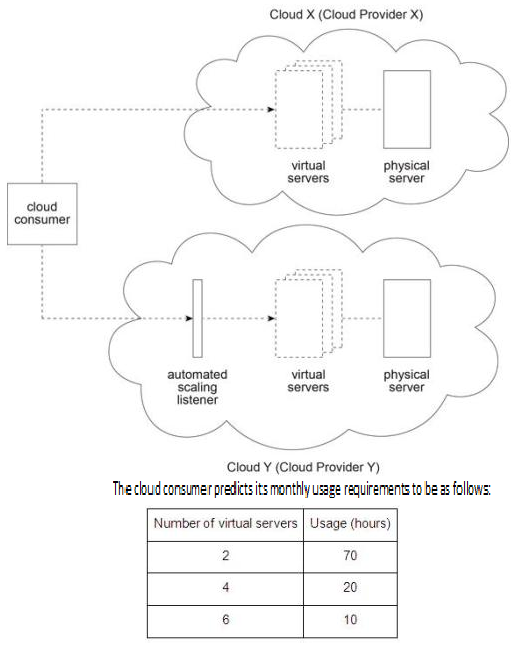Arcitura Education Exam C90.03 Topic 5 Question 7 Discussion
Topic #: 5
A cloud consumer is interested in leasing cloud-based virtual servers. It compares the virtual servers offered by Cloud Provider X and Cloud Provider Y. Cloud X (owned by Cloud Provider X) and Cloud Y (owned by Cloud Provider Y) both provide shared physical servers that host multiple virtual servers for other cloud consumers. The virtual servers on Cloud X are accessed directly, whereas the virtual servers on Cloud Y are accessed via an automated scaling listener. On Cloud X, virtual servers are pre-configured to support a specific amount of concurrent cloud service consumers. When this threshold is exceeded, cloud service consumer requests are rejected. Due to the use of the automated scaling listener, virtual servers on Cloud Y can provide a greater level of elasticity. The hourly cost to the cloud consumer to use a virtual server on Cloud X is half that of the cost to use a virtual server on Cloud Y. Within a one month period, Cloud Provider X bases its hourly charge on the maximum number of virtual servers used. Within a one month period, Cloud Provider Y bases its hourly charges on actual virtual server usage. Cloud Provider Y charges $20 for each hour that a cloud consumer uses a virtual server.

The cloud consumer is required choose the cloud provider with the lowest on-going cost based on its predicted usage. Which of the following statements accurately calculates the on-going usage costs of Cloud Providers X and Y and correctly states the cloud provider that the cloud consumer must choose?
Currently there are no comments in this discussion, be the first to comment!